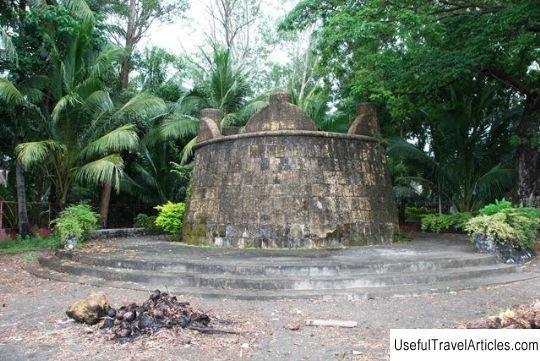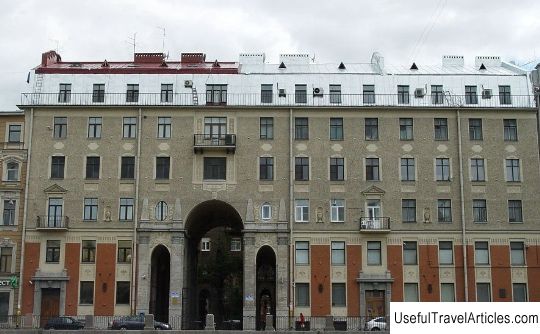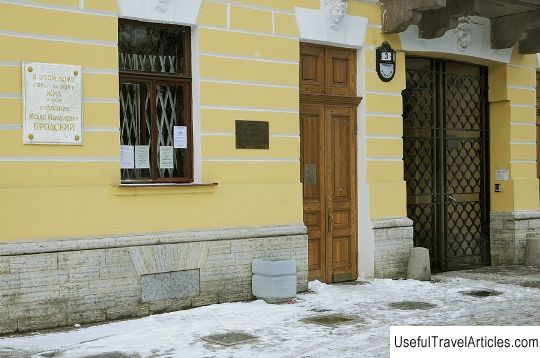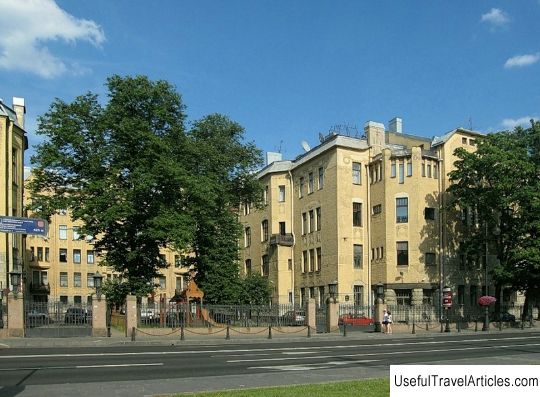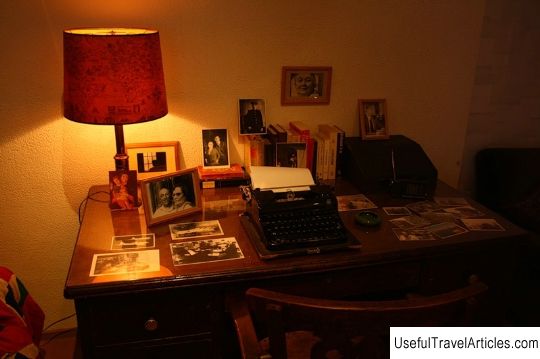House Muruzi description and photo - Russia - St. Petersburg: St. Petersburg
Rating: 8,5/10 (309 votes) 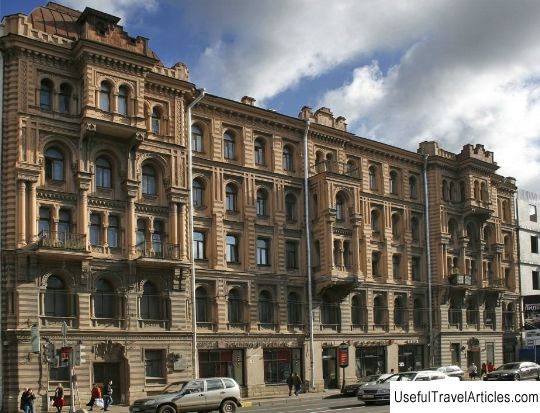
Muruzi's house description and photos - Russia - Saint Petersburg: Saint Petersburg. Detailed information about the attraction. Description, photos and a map showing the nearest significant objects. Photo and descriptionMuruzi House is one of the architectural monuments of the late 19th century. Muruzi's house is located at the corner of Liteiny Avenue and Pestel Street. Its facades are made in an intricate Moorish style that attracts the eyes. As early as the 18th century, apartment buildings "for tenants" began to appear in St. Petersburg. The reasons for this are an increase in the influx of population and, accordingly, an increase in land prices. Therefore, it became profitable to build houses and rent them out. Over time, apartment buildings began to displace the formerly popular mansions. Each apartment building in the center of St. Petersburg had from 50 to 500 people. The construction of the Muruzi house took place from 1874 to 1877. The construction was supervised by A.K. Serebryakov. The Muruzi House draws attention with its quaint Moorish-style facade with a large number of bay windows, niches, balconies, decorated with horseshoe arches, thin terracotta columns and stylized inscriptions. The corner towers give a special expressiveness to the silhouette of the house. According to the project, they were to be covered with glazed tiles. But, unfortunately, neither graceful cast-iron parasols-balconies nor railings made of sheet zinc have survived to our time. Alexey Konstantinovich Serebryakov with his assistants P.P. Shestov and Sultanov A.I. reflected in this building the passion for the Spanish-Moorish culture, which was fashionable at that time. Until the middle of the 19th century, on the site of the Muruzi house, there was a classic wooden one-story mansion with a portico of Ionian pilasters, with a shady garden. The first owner of this house is the chamberlain N.P. Rezanov. Then the house was owned by the merchant A. Menshutkin and the famous collector Prince V. Kochubei. In 1874, the site was acquired by one of the famous representatives of the Greek colony in St. Petersburg - Prince Alexander Muruzi. His father secretly assisted in the annexation of Moldova to Russia, for which he was executed by the Turks. Built in three years, the Muruzi house immediately attracted special attention with its exterior decoration and interiors. The building was built in accordance with the requirements of the State Council for the maximum height of buildings in St. Petersburg. Its height was 23 m 10 cm. On the facades of the house there were columns made of baked clay, the entrances of the house were decorated with friezes with Arabic script. The interiors of the building were made in the Rococo style: sculpture, damask on the walls, gilding molding, picturesque shades, oak and marble fireplaces. The house was equipped with all the latest amenities: heating, running water, steam laundry, 28 bathrooms. But the interior of the 26-room apartment of the owner of the house, located in the mezzanine, was distinguished by special luxury and splendor. Climbing the stairs of white Carrara marble, guests found themselves in a hall that resembled the courtyards of the palaces of Mauritania. The vaults of the hall were supported by 24 thin marble columns, in the center was a fountain. The Muruzi house consisted of fifty-seven apartments and seven shops. The costs of building the house were at that time a truly fantastic amount. And when, in 1880, Prince Muruzi died, his house was almost sold under the hammer. But, keeping in mind the merits of the Muruzi family, Alexander III allowed, as an exception, to issue a loan of 500 thousand rubles to the prince's widow. The ceremonial apartments of the building were occupied by a wealthy public: generals, senators, professors, etc. More modest tenants settled in the upper floors and courtyard wings. There were student rooms under the roof. Below - the famous N. Abramov's gingerbread shop, Guerin's hairdresser. In the courtyard wing of this house, in 1879 he rented a small three-room apartment N.S. Leskov; here he worked on the completion of his story "Lefty". The publicist N. Annensky lived in Muruzi's house, and A. Kuprin was a guest. In 1899, the famous literary couple - Merezhkovsky and Gippius settled on the fifth floor of this house. They turned the apartment into a literary salon, in which all the famous writers of the Silver Age gathered, incl. Blok, Bely, Yesenin. Since the spring of 1919, a literary studio was located here at the publishing house "World Literature", whose members were Zoshchenko, Berberova, Slonimsky, Adamovich, the Nappelbaum sisters. A. Blok read his poems in front of them, M. Gorky spoke. The studio taught Zamyatin, Chukovsky, Shklovsky, Lozinsky. In 1921, the studio was transformed into the "House of Poets", where they discussed new poems and lectured on versification. It was in Muruzi's house that Anna Akhmatova last saw Gumilev before his arrest. The poet Joseph Brodsky lived in one of the communal apartments of this house for about 20 years.            We also recommend reading Su Nuraxi description and photos - Italy: Sardinia Island Topic: House Muruzi description and photo - Russia - St. Petersburg: St. Petersburg. |
